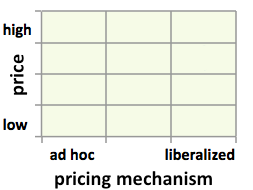Knowledge fuels change - Support energypedia!
For over 10 years, energypedia has been connecting energy experts around the world — helping them share knowledge, learn from each other, and accelerate the global energy transition.
Today, we ask for your support to keep this platform free and accessible to all.
Even a small contribution makes a big difference! If just 10–20% of our 60,000+ monthly visitors donated the equivalent of a cup of coffee — €5 — Energypedia would be fully funded for a whole year.
Is the knowledge you’ve gained through Energypedia this year worth €5 or more?
Your donation keeps the platform running, helps us create new knowledge products, and contributes directly to achieving SDG 7.
Thank you for your support, your donation, big or small, truly matters!
Fuel Prices Philippines
Part of: GIZ International Fuel Price database
Also see: Philippines Energy Situation
Fuel Pricing Policies
| Local Currency: | PHP |
| Exchange Rate: | 43.568
|
| Last Update: |
"Pricing policy: The downstream petroleum sector was deregulated in 1998. The import duties on crude oil and petroleum products were reduced from 3% to 0% by an executive order in Jun 2010. In Feb 2009, the Department of Energy asked oil companies to explain in writing within 48 hours the justification for price increases, and added that it was checking the dates of the acquisition of the supply, the volume, the value, and the shipment date. On Oct 23, 2009, government imposed price ceilings in response to adverse weather events, forcing oil companies to lower prices back to the Oct 15 level. This led to early closure of some filling stations. The ceilings were lifted on Nov 16, on condition that the oil companies agree to implement discounts and stagger future price increases. Under the label “jump-starting” strategic reserves, the president ordered Philippine National Oil Company-Exploration Corporation, which is 99.8% owned by government, to sell diesel at ₱2–3 (US$0.05–0.07)/liter below the market level starting in Jul 2011.
Price negotiation: Government in 2003 negotiated voluntary diesel price discounts with oil companies for transport operators, and there were 803 filling stations offering discounts as of Dec 2012. The size of the discount has varied over the years.
Compensation: In April 2011, an executive order established a Public Transport Assistance Program and allocated ₱450 million (US$10 million) for compensation using smart cards to registered jeepney and three-wheel drivers. At ₱1,050 (US$24) per jeepney, only 95,000 out of 150,000 cards printed for jeepneys were claimed, enabling the government to offer an additional ₱1,200 (US$28) per vehicle in 2012. Government abandoned a plan for a fuel subsidy scheme for agriculture and fisheries in May 2011, citing difficulties with beneficiary identification. Hedging: Philippine Airlines reported fuel-price hedging losses for the financial year ending in March 2009.
Information: The Department of Energy monitors both wholesale and retail prices, and posts detailed current and historical data by location and company as well as the location of each filling station offering a diesel fuel discount on its Web site."
(Source: Kojima, Masami. (2013, forthcoming). “Petroleum product pricing and complementary policies:Experience of 65 developing countries since 2009.” Washington DC: World Bank.)
Fuel Prices and Trends
| Gasoline 95 Octane | Diesel | |
|---|---|---|
| in USD* |
|
|
| in Local Currency |
|
|
* benchmark lines: green=US price; grey=price in Spain; red=price of Crude Oil
Fuel Price Composition
Price composition for one litre of Gasoline 95 Octane as of 2011/04/20 in Manila.

(*Singapore spot market price for 95 octance gasoline)
Operator costs include seaside shipping, inland transportation, storage, service station costs, etc.
VAT is the only tax on fuels as of May 2011.
Source: own calculation based on http://www.doe.gov.ph/OPM/Pricing%20Formula.htm
At a Glance
| Regulation-Price-Matrix |
| ||||
 |

|

|

| ||
Sources to the Public
| Type of Information | Web-Link / Source |
|---|---|
| Other Information | http://www.doe.gov.ph/ |
| Price Composition | http://www.doe.gov.ph/ |
| Pricing Mechanism | http://www.doe.gov.ph/ |
| Pump prices and margins | http://www.doe.gov.ph/OPM/Pumpprices.htm |
| Wholesale Prices | http://www.doe.gov.ph/ |
Contact
Please find more information on GIZ International Fuel Price Database and http://www.giz.de/fuelprices
The following coordinate was not recognized: {{#geocode: Philippines|google }}.



















